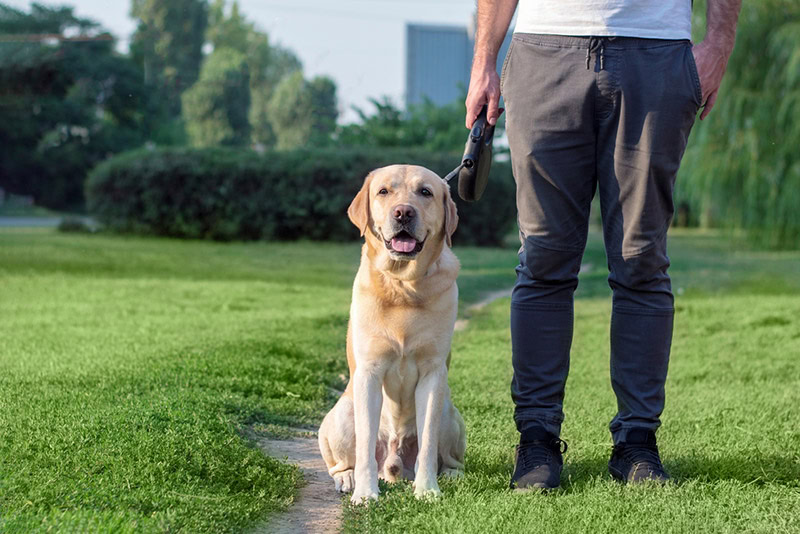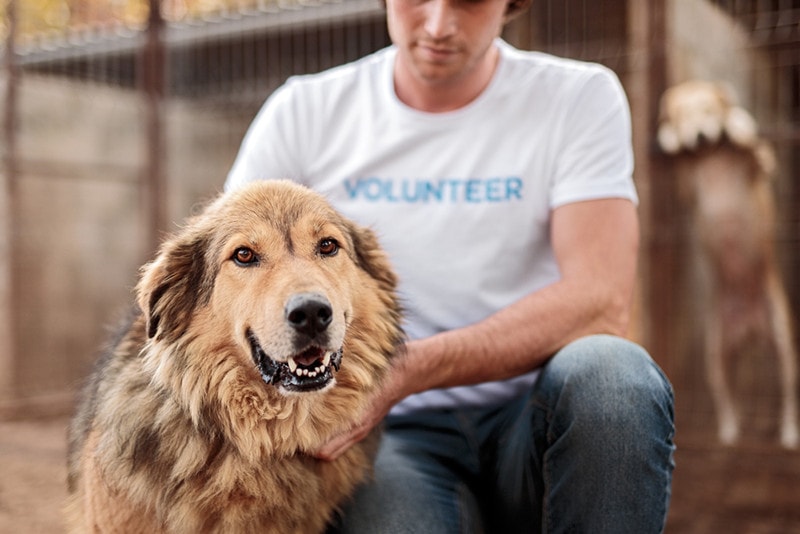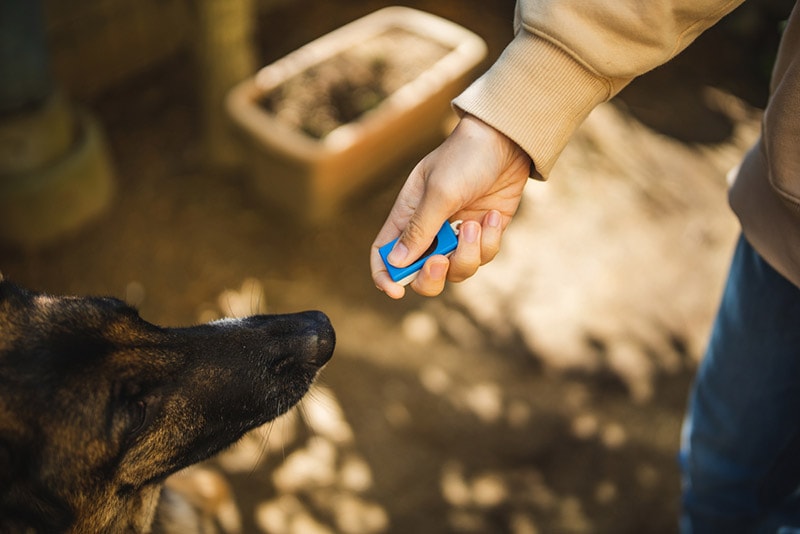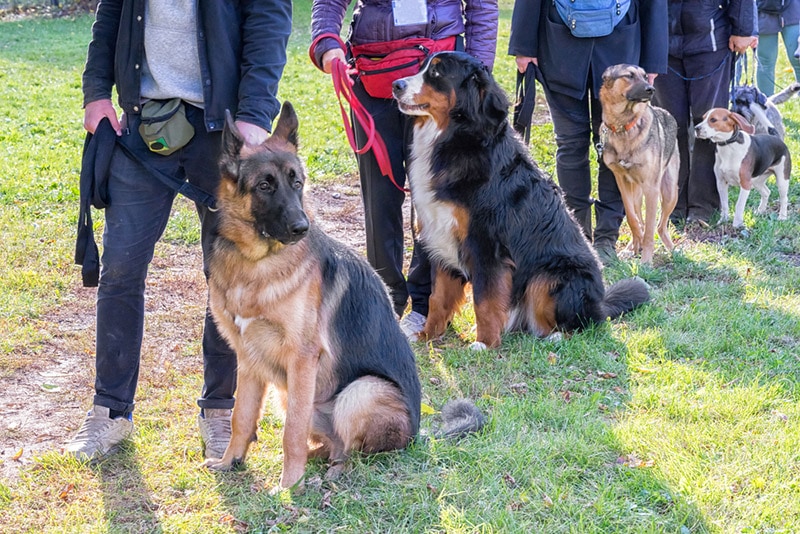How to Become a Guide Dog Trainer: 7 Important Steps

Updated on

Becoming a guide dog trainer is an incredibly rewarding and fulfilling career. This is an excellent option for those who love dogs and desire to have a positive impact on others’ lives.
Guide dog trainers teach dogs the necessary skills to assist visually impaired individuals, providing them with the independence and freedom they deserve. If you’re interested in this profession, here are the seven most important steps you need to know.
Before You Start: Research the Profession
While it is tempting to jump right into this profession, there are a few things you want to investigate first:
- Research the role of a guide dog trainer.
- Familiarize yourself with the required skills, the responsibilities, the work environment, and the potential career growth.
- Talk to people working in the field and read articles or blogs related to the profession.
After you have done some of the legwork, then you are ready to jump into the major steps.
The 7 Steps for Becoming a Guide Dog Trainer
1. Gain Experience With Dogs
To become a successful guide dog trainer, it’s essential to have experience working with dogs. This can be achieved by volunteering at animal shelters, working at a doggy daycare or boarding facility, or even fostering dogs in need.
Developing a strong understanding of dog behavior, breed characteristics, and body language will be invaluable in this line of work.

2. Acquire Formal Education
While not always required, having a formal education in animal behavior or a related field can be advantageous. Studying animal behavior, psychology, or veterinary technology can prepare you well for a career in training guide dogs. Some institutions and organizations also offer specialized programs in assistance dog training.
3. Obtain a Professional Certification
Professional certification is a significant milestone for any aspiring guide dog trainer. Organizations such as the International Guide Dog Federation (IGDF)1 and Assistance Dogs International (ADI)2 offer certifications and accreditation programs.
These certifications will not only enhance your credibility but also demonstrate your commitment to the profession.

4. Gain Hands-on Training
To hone your skills and gain practical experience, it’s crucial to work under the guidance of an experienced trainer. Many guide dog organizations offer internships or apprenticeships, which provide valuable hands-on training and exposure to the world of guide dog training.
If you hope to succeed, you’ll need to allocate a substantial amount of time to learn and practice the required skills since it’s a crucial aspect of your journey.
5. Master Essential Training Techniques
Guide dog trainers employ various techniques to teach dogs the skills needed to assist visually impaired individuals. Become proficient in techniques such as positive reinforcement, clicker training, and target training.
Continuously update your knowledge and stay current with the latest training methods and industry developments.

6. Develop Excellent Communication Skills
A successful guide dog trainer must be able to communicate effectively with both dogs and people. Good communication skills are essential for teaching dogs complex tasks, as well as for educating and supporting their future handlers. Attend workshops and seminars or take online courses to improve your communication and interpersonal skills.
7. Build a Professional Network
Networking with professionals in the industry is invaluable for aspiring guide dog trainers. Attend conferences, workshops, and other events to connect with established trainers, veterinarians, and other industry professionals.
Building relationships and gaining insights from others in the field will help you navigate the challenges you may face and open up potential job opportunities.

What Is the Best Guide Dog in the World?
There isn’t a single “best” guide dog in the world, as the effectiveness of a guide dog depends on the individual dog’s temperament, training, and the specific needs of their handler.
Nevertheless, there are specific breeds that excel in the role of guide dogs due to their temperament, intelligence, and adaptability. As a result, these breeds are frequently used as guide dogs. Some of the most sought-after guide dog breeds include:
- Labrador Retriever: Labrador Retrievers are the predominant breed chosen for guide dogs. They are celebrated for their intelligence, affability, and gentle temperament, making them an ideal fit for the job.
- Golden Retriever: Golden Retrievers are also widely used as guide dogs due to their intelligence, eagerness to please, and calm temperament.
- German Shepherd: German Shepherds have been used as guide dogs since the early days of guide dog training. They are intelligent, loyal, and protective but may require more experienced handling than Labradors or Golden Retrievers.
- Standard Poodle: Standard Poodles are sometimes used as guide dogs, particularly for people with allergies, as they have a hypoallergenic coat. They are intelligent, trainable, and have a calm demeanor.
Ultimately, the best guide dog for a person depends on the individual dog’s characteristics, the specific needs of the handler, and the bond they form together. A well-trained guide dog of any breed can be an invaluable partner for someone who is visually impaired.

Is There a Shortage of Guide Dogs?
Yes, there often is a shortage of guide dogs in many countries. The demand for guide dogs frequently exceeds the supply, as training a guide dog takes a significant amount of time, resources, and expertise. Several factors contribute to this shortage:
What’s more, the percentage of puppies successfully passing all the training requirements has decreased significantly. The rate used to be around 65% but has now declined to less than 50%. This is the lowest it’s been in decades, and it’s further evidence of the need for dedicated trainers.
Conclusion
Becoming a guide dog trainer is a journey that requires dedication, patience, and a genuine love for dogs. By following these seven important steps, you’ll be well on your way to a rewarding career that changes lives for the better!
Featured Image Credit: fetrinka, Shutterstock












